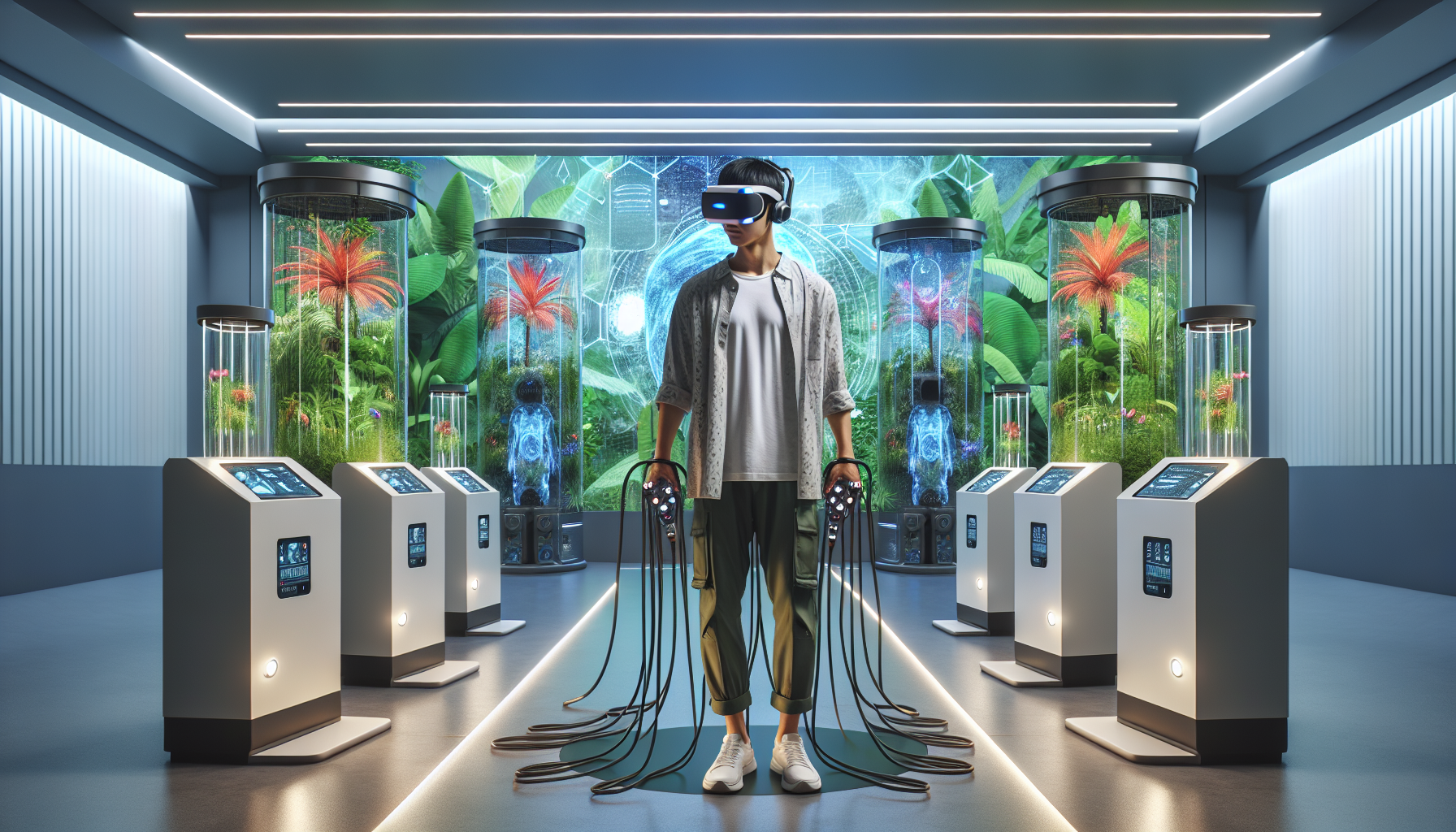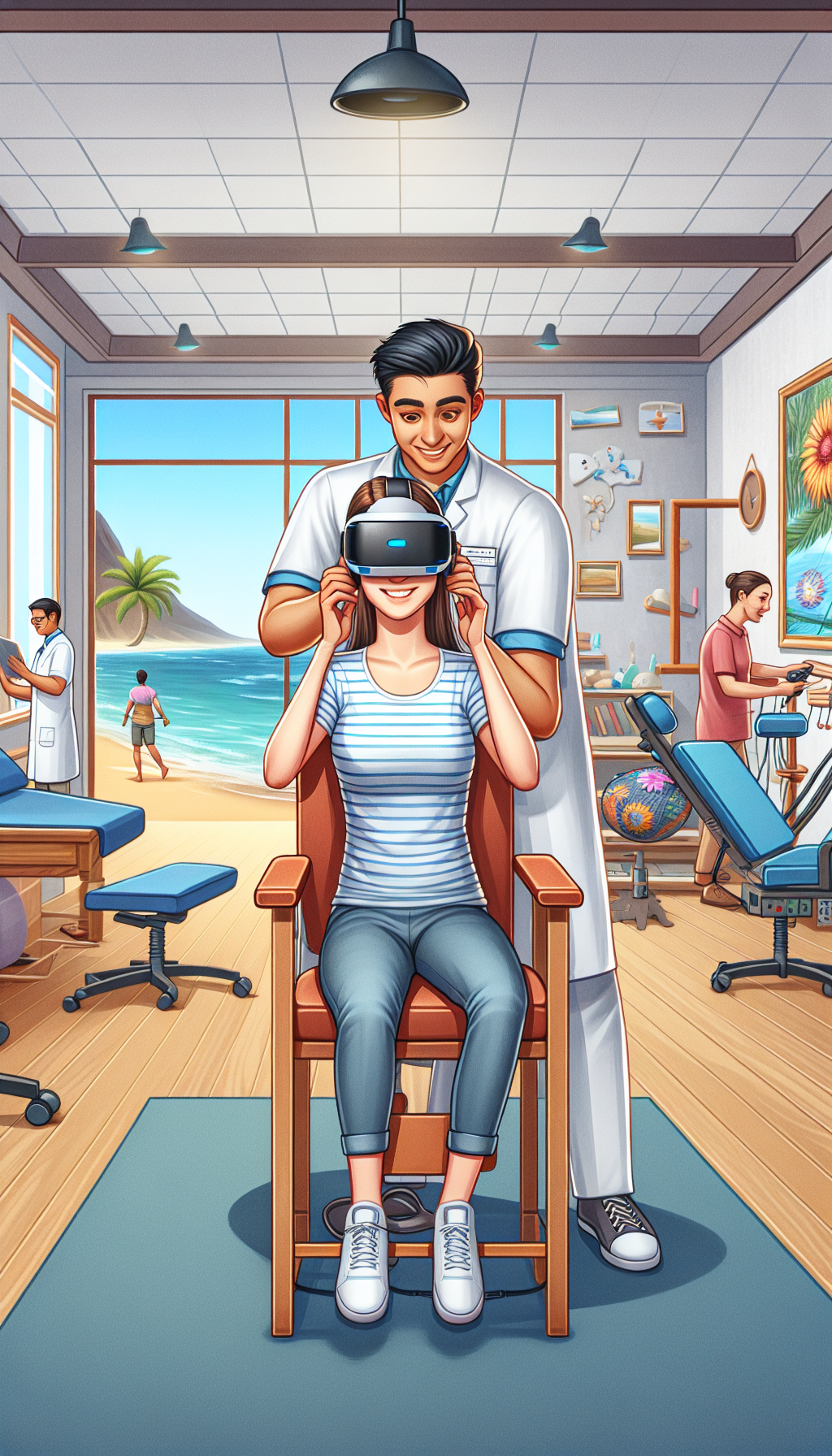Virtual reality (VR) has transformed from a futuristic concept into a practical tool in various fields, including healthcare. With its ability to create immersive, controlled, and modifiable environments, VR presents a unique opportunity for advancing sensory health. Sensory health, crucial for our interaction with the world, involves the efficient functioning of our senses—sight, hearing, touch, taste, and smell. Disruptions in sensory health can significantly impact daily activities and overall quality of life.
The Intersection of Virtual Reality and Sensory Health
The application of VR in the realm of sensory health is diverse, ranging from rehabilitation for sensory loss to therapeutic interventions for sensory processing disorders. For instance, VR can simulate environments that help individuals with visual or auditory impairments adapt to their limitations. Moreover, for those with sensory processing issues, such as children on the autism spectrum, VR can provide controlled exposure to various stimuli, aiding in the development of coping mechanisms and sensory integration skills.
Sensory Integration and VR
Sensory integration refers to the process by which the brain organizes and interprets sensory information, leading to appropriate responses. When there is a dysfunction in this process, an individual may exhibit hypersensitivity or hyposensitivity to sensory stimuli. VR technology is particularly advantageous in sensory integration therapy as it allows therapists to create tailored environments that expose individuals to specific stimuli in a safe and measured way. Through repeated exposure and interaction within VR settings, individuals can gradually learn to process and respond to sensory information more effectively.
Enhancing Sensory Skills with VR
The advancement of sensory skills is a critical aspect of sensory health. In the context of rehabilitation, VR can be used to strengthen weakened sensory abilities. For example, audio-visual exercises within a VR environment can aid in improving the auditory and visual acuity of patients recovering from strokes or head injuries. In addition, VR’s capability to simulate real-life activities can assist in the development of proprioceptive and vestibular senses, which are essential for balance and spatial orientation.
Virtual Reality as a Therapeutic Tool
The therapeutic uses of VR extend to various sensory-related conditions. For individuals with phobias or anxiety disorders, VR can provide graded exposure therapy in a controlled environment, helping them confront and manage their fears. Similarly, for those undergoing pain management, VR can serve as a form of distraction therapy, redirecting the focus of the patient away from the sensation of pain.
VR in Sensory Health Interventions
Incorporating VR into sensory health interventions can lead to more engaging and effective therapies. For instance, sensory integration approaches in speech therapy can benefit from VR by creating interactive scenarios that enhance linguistic and cognitive skills while also targeting sensory processing. The multi-sensory experiences provided by VR can stimulate language development in a manner that traditional methods may not be able to achieve.
VR and Educational Outcomes
The impact of sensory integration on educational outcomes is well-documented, with sensory-friendly classrooms and tools supporting the learning process. VR can play a role here by offering virtual classrooms and educational content tailored to the sensory needs of students. This can be particularly beneficial for children with sensory processing challenges, as outlined in the impact of sensory integration on educational outcomes.
The Role of Sensory Rooms and VR
Sensory rooms, designed to deliver a therapeutic environment with adjustable sensory stimuli, are becoming increasingly common in mental health facilities. The integration of VR into these spaces can enhance their effectiveness by offering a wider range of controlled sensory experiences. Patients can be transported to calming natural settings or engage in interactive games that promote relaxation and sensory modulation. The role of sensory rooms in enhancing mental health is further explored in the role of sensory rooms in mental health facilities.
Challenges and Considerations
While the benefits of VR in sensory health are promising, there are challenges to consider. Accessibility and cost can limit the widespread adoption of VR technology. Furthermore, the potential for VR-induced motion sickness or cybersickness necessitates careful design and implementation of VR experiences, particularly for individuals with pre-existing sensory sensitivities.
Future Directions
As VR technology continues to evolve, its applications in sensory health will likely expand. Research into the long-term effects of VR therapy, the development of more affordable VR solutions, and the creation of more inclusive VR content are areas that could see significant growth in the coming years.
External Resources
For those interested in the technical aspects and research surrounding VR and sensory health, the following resources offer in-depth insights:
- A comprehensive study on VR and sensory processing disorders provides a detailed look at the potential for VR in therapeutic settings.
- An analysis of VR as a tool for pain management explores the effectiveness of VR in distracting patients from pain.
- A discussion on VR in stroke rehabilitation examines the role of VR in improving sensory and motor functions.
In conclusion, virtual reality holds significant potential for advancing sensory health across a spectrum of conditions and therapies. By creating immersive, controllable environments, VR can provide targeted interventions that enhance sensory integration, develop sensory skills, and offer therapeutic benefits. As technology progresses, the integration of VR into sensory health practices will likely become more prevalent, offering innovative solutions to individuals facing sensory challenges.



